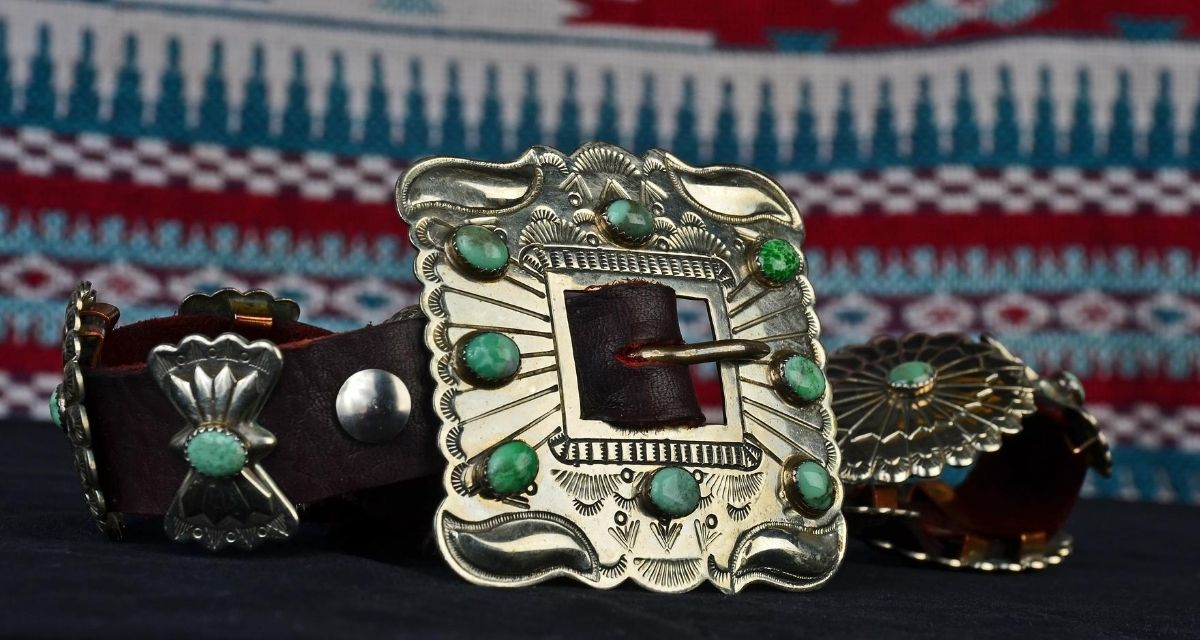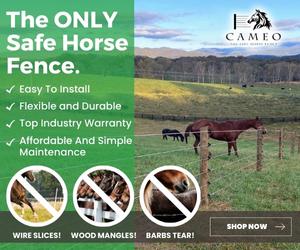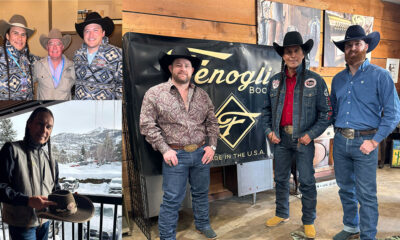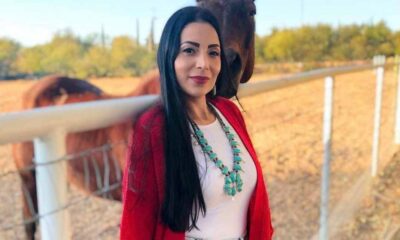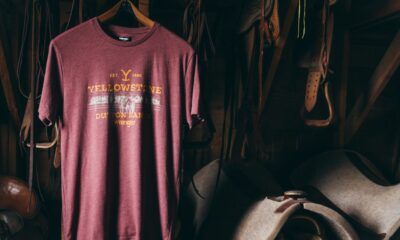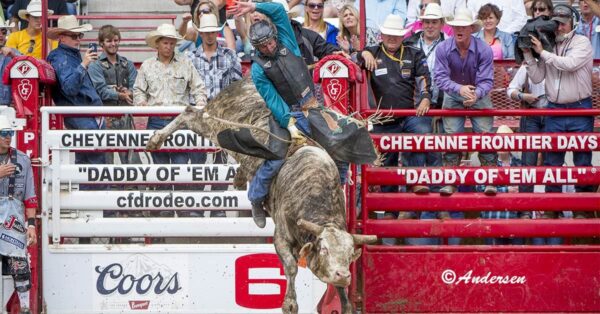The word concho comes from the Spanish “concha” which actually means “conch” or “seashell” but has come to mean “round disks of silver”. These disks are often used to decorate saddles, bridles, clothing, or used as jewelry such as for pendants, bolo ties, and leather belts. Concho belts are a long-time Navajo tradition although it has been guessed that the Navajo took conchos from Mexican tack items or from the Plains Indians and started creating their own after that.
History
There were several stages or “phases” in the days of early concho creation. The beginning of concho belts is referred to as “First Phase” belts. These conchos were made before Native Americans had learned anything or very little about soldering silver. At that time, the conchos were hammered from melted coins, cut and filed into shape, engraved, and then they would cut a diamond shape slot out of the middle of the concho for the leather belt to loop through. These were very basic conchos that didn’t require any soldering. This style of concho was generally created between the late 1860s to the 1880s depending on the geographic area.
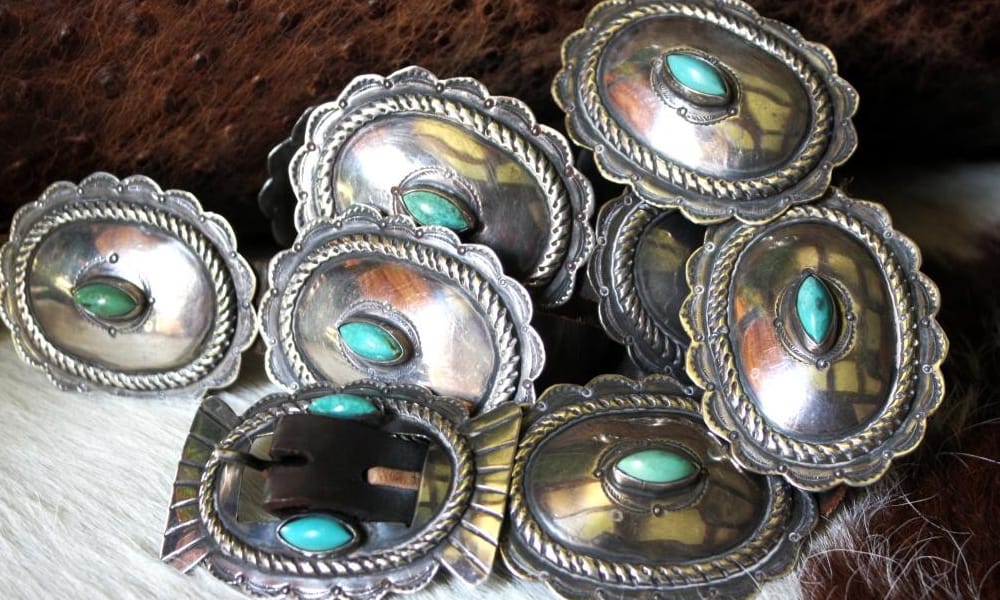
The “Second Phase” of concho belt development was when the Native silversmiths started to solder. They would solder a silver or copper bar across the back of the concho to run the belt through the back. This allowed the entire face of the concho to be engraved or decorated and kept the belt on the backside of the concho. This phase roughly lasted between the years of 1890 through the early 1900s.

In the last or “Third Phase” of concho belt development was when the “butterfly” design started to appear between conchos, as well as the use of turquoise on the face of a concho. A “butterfly” is another smaller concho in between the bigger conchos (as shown below) and its shape resembles that of a butterfly. The use of copper for the bar across the back became more prevalent than silver as we get close to current fashion. A belt with butterflies (and sometimes turquoise) from the early 1900s through the 1930s is generally thought of as “early third phase” and a belt from the 1940s through 70s would often be referred to as “vintage” while anything newer would be modern to contemporary.
Concho Belts in Today’s Western Fashion
In today’s current world of western fashion, the concho belt is something that hasn’t yet gone out of style. It is timeless, as some would say. Concho belts have taken on a life of their own and now you can find them in any design, with or without turquoise, copper ones, blingy ones, the list goes on and on. We recommend following your favorite western influencers on Instagram to see what style concho belts you do and don’t like before committing to buying one yourself. If you are looking to buy a concho belt to add to your western fashion collection, there are a couple things you should consider.
Do you want the real deal?
Real, Native conchos can start anywhere from $500 and go up significantly from there based on how intricate you want it to be. These belts are often made out of the best materials and are handmade. You can always buy a cheaper version for between $40-$70. Some of our favorite brands are Tony Lama, Ariat, Shyanne, or Nocona.
Do you want it to be custom?
Looking for something is unique to just you? Get ready to pay for quality! Our friend, Brit West does custom belts that start at $2,998.00. But you can be rest assured that the quality of what you’re getting is the real deal and you are getting something is one hundred percent unique to you.
We hope that you enjoyed this segment on concho belts in western fashion. We can’t wait to bring you more articles just like this one. Do you have something you want to know more about? Let us know, we would love to do an article on it!
Last Updated on 10/01/2020 by Krysta Paffrath
CLN Community Sponsor
